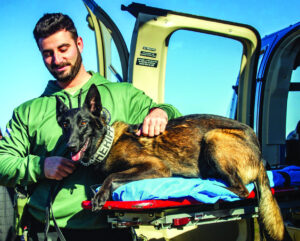Geriatric conflict: Range, payload questions remain
By By Craig Ziemba
Jan. 13, 2002
The destruction of the Taliban regime in Afghanistan served as a very important object lesson to the rest of the Arab world: Harboring our enemies will doom a government to extinction.
As a military pilot on duty in the region, however, I can't help but notice another object lesson directed at the United States: Our newest fighter and attack aircraft have some serious problems.
Have you noticed from news footage and Pentagon briefings which aircraft are doing the lion's share of the bombing in Afghanistan? It's not the billion dollar a copy B-2, or the F-117 Stealth Fighter, or the new F-18 Super Hornet. The warhorse of this campaign was built before computers, satellites, and cell phones. The B-52 that leaves contrails in the sky and strings of bombs miles long across Tora Bora turns 50 this year, and the Air Force plans to keep it in service for decades to come.
What's wrong with the sleek, stealthy new jets that we have spent hundreds of billions of dollars on? Two words: Range and payload. Twenty years ago the departments of the Navy and Air Force chose to sacrifice both in favor of pursuing survivability over bombing capability.
Conventional wisdom held that we would never again need to drop truckloads of bombs on the enemy. War had become a relatively sterile endeavor where all of our pilots returned to base with impressive footage of precision-guided weapons surgically destroying the bad guy's command and control centers with nary a civilian harmed.
Guided weapons are great for destroying point targets like radar sites and bridges, but there comes a time in war when destruction on a grand scale becomes necessary. We lost our stomach for placing troops in harm's way and destroying the enemy by the thousands … until Sept. 11th.
Now that the gloves are off, it is evident that we really do need heavy bombers. The Navy never replaced the A-6 Intruder and carrier battle groups are now strapping bombs to planes designed as air-to-air fighters. The effort is valiant, but the payloads are puny. F-14 Tomcats can only carry four bombs, and the F-18 Hornet is so fuel-limited that it has to be carried into and out of the fight by Air Force tankers, which totally defeats the purpose of having an autonomous, floating airfield.
The newest Air Force plans hardly fare any better. Due to horrendous logistic and security issues, the B-2's have been flying 33-hour round-trip missions from bases in the United States to deliver payloads which are a fraction of the size of the B-52's. B-1 bombers have so many mechanical problems that no one in the industry takes them seriously. So day after day, the old B-52's launch and deliver everything from old-fashioned, general purpose iron bombs to the latest GPS-guided weaponry by the truckload.
Oh, by the way, the vast majority of tankers (KC-135's) that are fueling all of these strikes over Afghanistan were also built in the 1950's.
How did we get here? It is common knowledge that all too often, weapon selections are political rather than military decisions. Powerful politicians use their clout to ensure that the company in their district is awarded the contract regardless of the needs of the service. This self-serving corruption is what passes for representative democracy these days.
What amazes me is that our military continues to adapt, improvise and overcome to win victory after victory in spite of the buffoonery that occurs in Washington. Credit the soldier, the airman, and the sailor in the fight, not the suit on C-SPAN.
What should be done? In the first place, I believe the Navy and Air Force need to recognize the need for a true warfighting replacement for the B-52 capable of delivering the payload necessary to win big. The new Joint Strike Fighter awarded to Lockheed has no legs (range) and, like the F-117, carries only a couple of bombs. It's time to build another medium to heavy bomber.
The old attack pilot's creed says it well: "The only way to negotiate with your enemy is with your knee in his chest and your knife to his throat." As for the politicians who got us into this mess, the power to remove them is in your hands.







